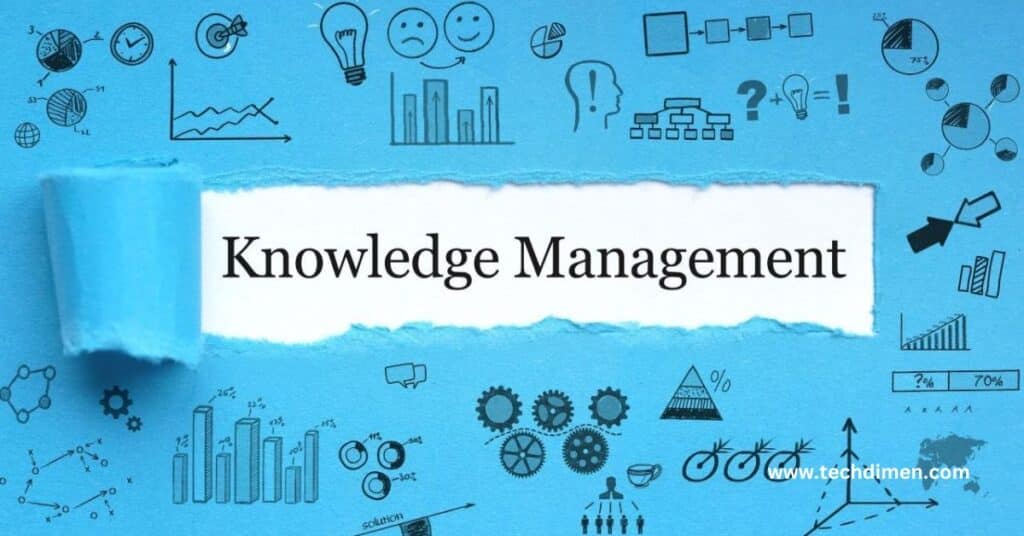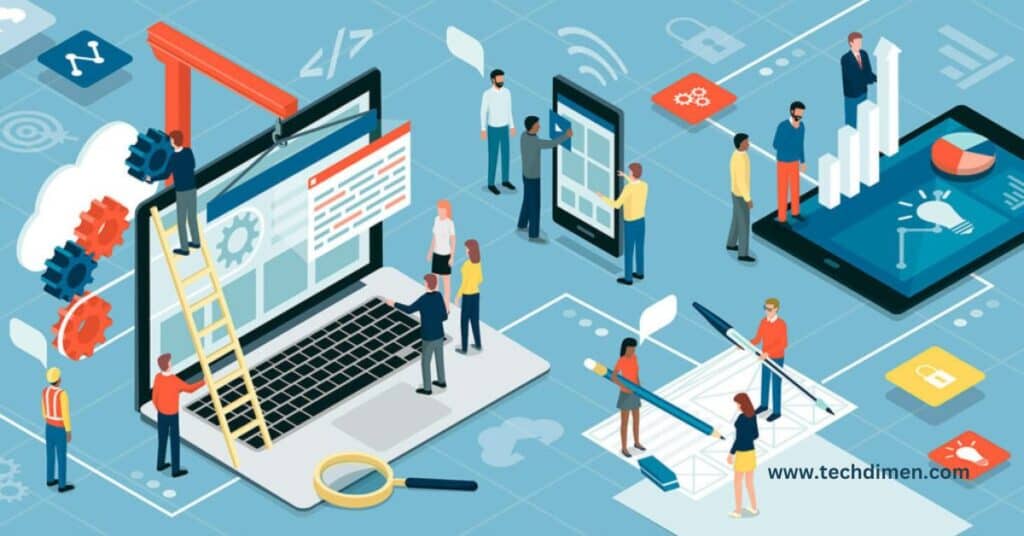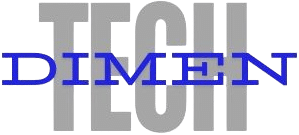In today’s competitive business environment, technology and knowledge management are no longer optional extras. They are essential components of any successful organization. Companies that effectively manage their knowledge resources are able to tap into valuable insights, drive innovation, and gain a serious edge over competitors. This article explores in detail how technology enhances knowledge management, transforming scattered data into actionable intelligence.
Why Tech Enabled Knowledge Management Matters
Organizations today generate massive amounts of data every second, but a surprising majority of it remains unused. This unused data represents a missed opportunity to harness valuableTechnology and Knowledge Management. By implementing smart knowledge management systems, organizations can unlock this dormant potential and convert it into strategic advantage. Without an effective KM strategy, companies face poor decision-making due to inaccessible information, frequent loss of knowledge when employees leave, and redundant efforts caused by the lack of centralized knowledge.
The Core of Knowledge Management

Understanding the full lifecycle of knowledge management is critical. It involves capturing both explicit knowledge, such as manuals and reports, and tacit knowledge, which includes insights and experience residing in employees’ minds. Once captured, this knowledge must be organized with clear tagging and structure so that it becomes easily discoverable. The next step is sharing, which ensures that the right people can access relevant information when they need it. Finally, knowledge should be applied within everyday workflows and decisions to generate value.
Modern organizations struggle without proper knowledge management because critical information often remains siloed within departments. When systems are fragmented and don’t communicate, it leads to duplicated work and inconsistent information. Additionally, clunky or outdated tools discourage employees from engaging with KM systems, further reducing their effectiveness.
Technologies Driving KM in 2025
Several advanced technologies are redefining how companies approach knowledge management. Artificial intelligence and natural language processing are now used to auto tag documents, power contextual search, and provide intelligent chatbot assistants. Cloud collaboration platforms facilitate editing and sharing, making it easier to access the latest information from any location. Graph databases and knowledge graphs allow for the semantic connection of data across teams and systems. Blockchain technology is being used to maintain immutable knowledge logs and secure sensitive data. Augmented and virtual reality are increasingly used for immersive training, while APIs and system integrations reduce tool friction by enabling seamless data flow.
Solving KM Challenges with Technology

Many organizations still operate with legacy KM systems that create more problems than they solve. Information gets trapped in silos, documentation is often outdated, and teams struggle to locate the data they need. These issues are exacerbated by systems that lack proper indexing or version control. Employees frequently avoid using KM tools altogether if the interfaces are unintuitive or slow.
Technology offers effective solutions to these pain points. Centralized Technology and Knowledge Management hubs serve as a single source of truth, reducing confusion over document versions. AI driven recommendation engines suggest relevant content based on user behavior and search history. Unified search bars, powered by machine learning, allow users to search across emails, wikis, chats, and files from one place. Additionally, mobile first design ensures that knowledge is accessible wherever employees go, whether they are in the office or in the field.
Real-World Applications of KM Technology
Global firms are already reaping the benefits of modern KM tools. Deloitte, for example, has implemented intelligent portals that use AI and NLP to surface case studies and internal research. These tools help consultants find relevant information faster, resulting in a significant improvement in client response times. Airbus has built a global engineering knowledge hub that uses cloud collaboration and AI tagging. This system allows engineers from different countries to learn from one another’s experiences, preventing repeated errors and fostering innovation. At Mayo Clinic, cognitive computing tools analyze clinical data to surface previous cases and treatment protocols. Doctors use this information to make faster, more informed decisions that improve patient outcomes.
Building an Effective KM Strategy

Before adopting any tools, organizations should begin with a thorough audit of their current knowledge assets. This involves cataloging existing documents, evaluating current platforms, and identifying the gaps where knowledge is underutilized. Organizations must define clear objectives, such as reducing onboarding time or improving compliance, and select tools aligned with these goals. The technology must be easy to use, capable of scaling, and able to integrate with existing systems.
Even the most advanced tools require cultural alignment. Training should begin early, not as an afterthought. Contributions to the KM system should be recognized to encourage participation. Metrics such as search success rate, article usage, and sharing frequency must be tracked continuously to measure impact and guide future improvements. Knowledge management should become embedded in the organizational culture, not just function as a stand-alone initiative.
The Future of Smart KM
The future of knowledge management is adaptive, intelligent, and deeply integrated into daily workflows. AI copilots will anticipate users’ needs and deliver contextual information proactively. Systems will become more context-aware, adjusting their behavior based on the user’s role, location, and task. Autonomous content curation will reduce the manual workload on employees, and voice based interfaces will enable instant knowledge retrieval. These advancements will make KM a seamless and invisible part of how people work.
Final Word: Activate Knowledge as a Strategic Asset
Rather than treating knowledge management as a digital filing cabinet, organizations must see it as a strategic enabler. The right mix of technology and process allows companies to turn static information into dynamic intelligence. Organizations that treat knowledge as a competitive asset make better decisions, retain expertise, and stay ahead in their industries.
Knowledge Management Optimization Checklist

To improve your KM system, start by conducting a comprehensive audit of current assets. Identify gaps and pain points. Choose technology platforms that are intuitive, scalable, and easy to integrate. Ensure that the system is mobile-friendly and accessible. Use AI to tag and recommend content. Implement semantic search to improve discoverability. Monitor engagement and usage data. Provide continuous training and gather regular feedback. Treat the KM system as a living tool that evolves with your organization’s needs.
Case Study Insights
Deloitte addressed the challenge of retrieving case data by developing AI powered portals. As a result, consultants reduced search time by 25 percent. Airbus used cloud collaboration and AI to create a global engineering hub, helping teams share insights and avoid repeating mistakes. Mayo Clinic adopted cognitive computing to improve clinical decision support, leading to better patient care and more efficient workflows. These cases show how enterprise knowledge management, when executed properly, delivers measurable ROI and lasting value.
Certainly! Here’s a rewritten and polished version of the Technology and Knowledge Management FAQs section, formatted with H3 headings for each question and structured for clarity, readability, and SEO:
Technology vs Knowledge Management (KM)
| Aspect | Technology | Knowledge Management (KM) |
|---|---|---|
| Focus | Tools and systems | People and knowledge |
| Purpose | Automate and improve efficiency | Share, store, and use knowledge |
| Key Elements | Hardware, software, networks | Experience, insights, collaboration |
| Type | Tangible and codified | Intangible and cognitive |
| Dependency | Enables KM systems | Relies on technology to function |
| Tools | CRM, ERP, cloud platforms | Wikis, knowledge bases, forums |
| Goal | Boost productivity | Enhance decision-making and innovation |
FAQs
What is the role of technology in knowledge management?
Technology acts as the backbone of modern knowledge management. It enables organizations to capture, store, organize, and share information efficiently. Tools such as artificial intelligence, cloud computing, and collaborative platforms streamline knowledge flow, reduce manual work, and ensure critical information is always accessible.
How do knowledge management systems work in modern organizations?
Knowledge management systems (KMS) function as centralized platforms where employees can create, store, find, and share both structured and unstructured knowledge. These systems often include smart search functions, version control, content tagging, role-based access, and integrations with other business tools to support daily operations.
Why is knowledge management important for businesses today?
In today’s fast-paced, information-driven world, effective knowledge management ensures that valuable insights are not lost. It supports better decision-making, increases efficiency, improves training and onboarding, enhances customer support, and fosters continuous innovation across departments.
What are some examples of knowledge management tools?
There are many advanced knowledge management tools available. These platforms offer features like AI-powered search, real-time collaboration, content approval workflows, and analytics to track usage and impact.
How does AI improve knowledge sharing at work?
Artificial intelligence enhances knowledge sharing by automating repetitive tasks such as tagging, categorizing, and recommending content. It helps personalize the user experience by suggesting relevant knowledge based on previous interactions and queries. AI also powers chatbots that provide instant answers and guide users to the right content.
What are the biggest challenges in implementing KM systems?
Some common challenges include lack of user adoption, poor integration with existing tools, fragmented knowledge repositories, and failure to capture tacit knowledge. A weak knowledge-sharing culture and limited training resources can also hinder the success of KM initiatives.
How can a company prevent knowledge loss when employees leave?
To prevent knowledge loss, companies can use digital tools to capture institutional knowledge through structured documentation, video recordings, knowledge transfer interviews, and internal wikis. Encouraging team collaboration and mentoring programs also helps retain critical expertise within the organization.
What is the difference between a knowledge base and a knowledge graph?
A knowledge base is a centralized repository of static information such as FAQs, guides, and documents. A knowledge graph, on the other hand, is a dynamic network that connects data points and relationships semantically, enabling more intelligent and context-aware search and discovery.
Is blockchain useful in knowledge management?
Yes, blockchain can be beneficial in knowledge management by providing a secure and immutable ledger of data creation, modification, and access. This is especially valuable in industries where trust, transparency, and regulatory compliance are essential.
What industries benefit most from digital knowledge management systems?
Industries with complex information needs and high regulatory requirements gain the most from digital KM systems. These include healthcare, aerospace, legal, consulting, manufacturing, education, and information technology. These sectors rely heavily on accurate, up-to-date knowledge for compliance, operations, and innovation.
How do cloud-based KM platforms support remote teams?
Cloud-based knowledge management platforms allow remote teams to access, update, and collaborate on content in real time. They offer features such as multi-device access, offline availability, secure file sharing, and integration with chat or video conferencing tools, making cross-team collaboration seamless.
What metrics should be used to evaluate KM success?
Key performance indicators (KPIs) for KM success include knowledge access frequency, user engagement rates, average search success rate, reduction in duplicate work, content freshness, onboarding time, and employee satisfaction with the platform.
What does the future of enterprise knowledge management look like?
The future of enterprise KM is intelligent, integrated, and user-centric. Expect advancements like AI copilots, context-aware knowledge delivery, AR/VR-based training, smart assistants for real-time decision support, and voice-activated search to become standard features in KM ecosystems.
How can small businesses implement effective knowledge management?
Small businesses can start by identifying their critical knowledge assets and using low-cost, scalable tools like Notion or Google Workspace. They should foster a culture of documentation, assign KM champions, and ensure that knowledge sharing becomes a part of daily operations.
Final Thoughts
Organizations that fully leverage technology and knowledge management position themselves to lead, not follow. By blending human insight with smart systems, they convert chaos into clarity and data into decisions. The future belongs to businesses that understand knowledge is not just a resource to store but a power to activate.

Jhon AJS is a tech enthusiast and author at Tech Dimen, where he explores the latest trends in technology and TV dimensions. With a passion for simplifying complex topics, Jhon aims to make tech accessible and engaging for readers of all levels.







